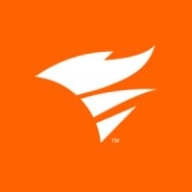


Find out what your peers are saying about Zabbix, Auvik, SolarWinds and others in Network Monitoring Software.
It provides accurate data for utilization, allowing us to monitor and optimize our investments in WAN connection capacity.
The return on investment is significant as the solution effectively reduces costs while being worth its expense.
The setup process is well-documented, making it easy to deploy.
Tutorials are available so I can manage any issue with PRTG Network Monitor easily.
If there is no timely response, getting a resolution is more difficult.
We had contact with SolarWinds regarding the implementation, and they were helpful.
They have good technical support.
If the user interface isn’t presenting data well, it becomes difficult to manage when scaling.
On a scale of one to ten, scalability is rated as 9.5.
PRTG Network Monitor has the ability to scale and add new devices.
You can install them in each network, even if they are not connected, and it works.
SolarWinds NPM is scalable and effective in handling large network infrastructures.
It is very stable.
We haven't needed vendor support for the last three years, which demonstrates the product's stability.
The NPM product is stable, particularly when used for simple network monitoring.
Many tools have poor user interfaces, making them hard to manage and navigate.
The GUI could be improved. It's a bit too basic.
They need to improve application performance monitoring, error tracing mechanisms, and log management.
PRTG Network Monitor should provide syslog monitoring since it is not available at this time.
PRTG Network Monitor can sometimes be too detailed and cluttered at the beginning, making it heavy to use.
SolarWinds needs to upscale on observability and add full-fledged observability features, including security features.
Customers have given feedback about the delayed response times from the technical team.
Features such as taking backup of the devices or configurations of the devices can be included in further versions of SolarWinds NPM.
We are using the free, open-source version.
The pricing for the Nagios XI product is good and better than other solutions.
Pricing is by the number of devices, not by sensor.
The prices are very high for PRTG Network Monitor.
It's not too high, nor too low, but it's reasonable.
The solution is considered expensive.
Pricing-wise, SolarWinds NPM is more expensive than PRTG.
Nagios XI simplifies our setup and reduces the time spent configuring monitoring tools.
The alerting system is very effective.
PRTG Network Monitor already provided me with 100 free sensors, which is enough for my network monitoring.
PRTG Network Monitor is easy to set up. Within a few minutes, it is operational.
It is advantageous because it can be deployed on-premises.
The most valuable feature for us is the database performance analyzer, which we use a lot.
SolarWinds NPM has specific modules for monitoring different network capabilities, which provides rich features for carrying out specific tasks.
It provides a detailed overview of the network, which is valuable.
| Product | Market Share (%) |
|---|---|
| SolarWinds NPM | 4.5% |
| PRTG Network Monitor | 4.2% |
| Nagios XI | 3.1% |
| Other | 88.2% |



| Company Size | Count |
|---|---|
| Small Business | 22 |
| Midsize Enterprise | 17 |
| Large Enterprise | 21 |
| Company Size | Count |
|---|---|
| Small Business | 55 |
| Midsize Enterprise | 18 |
| Large Enterprise | 38 |
| Company Size | Count |
|---|---|
| Small Business | 59 |
| Midsize Enterprise | 33 |
| Large Enterprise | 84 |
Nagios XI provides monitoring of all mission-critical infrastructure components, including applications, services, operating systems, network protocols, systems metrics, and network infrastructure. Third-party add-ons provide tools for monitoring virtually all in-house and external applications, services, and systems.
Nagios XI uses a powerful Core 4 monitoring engine that provides users with the highest levels of server monitoring performance. This high degree of performance enables nearly limitless scalability and monitoring powers.
With Nagios XI, stakeholders can check up on their infrastructure status using the role-based web interface. Sophisticated dashboards enable access to monitoring information and third-party data. Administrators can easily set up permissions so users can only access the infrastructure they are authorized to view.
Nagios XI Benefits and Features
Some of the benefits and top features of using Nagios XI include:
Reviews from Real Users
Nagios XI stands out among its competitors for a number of reasons. Several major ones are its integration options and monitoring abilities, as well as its alerting features.
David P., a senior DevOps engineer at EML Payments Ltd, writes, “We use Nagios as a network discovery tool. We use Nagios to maintain our uptime statistics and to monitor our services. It has allowed us to be much more sophisticated in our monitoring and alerting.”
An IT-OSS manager at a comms service provider notes, “Nagios XI has a custom API feature, and we can expose custom APIs for our integration. This is a great feature.”
PRTG Network Monitor runs on a Windows machine within your network, collecting various statistics from the machines, software, and devices which you designate. PRTG comes with an easy-to-use web interface with point-and-click configuration. You can easily share data from it with non-technical colleagues and customers, including via live graphs and custom reports. This will let you plan for network expansion, see what applications are using most of your connection, and make sure that no one is hogging the entire network just to torrent videos.
To monitor a large IT environment, it's important to be able to scale PRTG up. Paessler PRTG Enterprise Monitor includes all the proven capabilities of PRTG Network Monitor, which are enhanced by exclusive ITOps Board for a service-oriented, central overview of multiple PRTG servers.
SolarWinds NPM is a network monitoring solution that enables you to detect, diagnose, and resolve network performance issues and outages quickly and efficiently. The solution is a powerful tool that can help you increase service levels, reduce downtime with multi vendor network monitoring, simplify the management of complex network devices, improve operational efficiency, and much more.
SolarWinds NPM Features
SolarWinds NPM has many valuable key features. Some of the most useful ones include:
SolarWinds NPM Benefits
There are several benefits to implementing SolarWinds NPM. Some of the biggest advantages the solution offers include:
Reviews from Real Users
Below are some reviews and helpful feedback written by PeerSpot users currently using the SolarWinds NPM solution.
PeerSpot user Andrew N., Senior Network Engineer at Element Critical, says, “The "Performance Analyzer" feature is the solution's most valuable aspect. It's able to do the bounded graphs of all the interface stats, from errors to broadcasts and to current traffic. With a click of a button you're able to, in one interface, look at historical data for those items.” He also adds, “From the troubleshooting point of view, just having that peace of mind is great. And, The solution is extremely stable. We haven't had any issues in that regard. We haven't had issues with bugs, glitches, or crashes."
Daniel S., Systems and Data Warehouse Supervisor at MMSD, mentions, “The alerting and usage tracking is a valuable feature because it alerts us when we're getting near capacity on disk space, network utilization or processor utilization. It helps us manage our capacity and enables us to be proactive.”
A Senior Vice President and CIO at a financial services firm explains, “As we look to add more servers to our virtual environment and to understand the impact, the solution allows us to dig into the historical charts related to capacity planning. It also gives us visibility of spikes and allows us to track down the reasons for their occurrences. So too, it makes room for potential processes that have gotten hung or runaway and to know when it's time to reboot a server or service.”
Dinesh N., Digital Innovation at Bobcat Company, states, “The best part of the solution is the sharing display. It gives a general public ID wherein everyone can link to a public display. That's a good feature.”
Fazal A., Implementation & Support Specialist at 360Factors, comments, “We have configured multiple alerts for our network devices, including routers and switches, so that we are notified if any interface goes down. In the event an interface goes down, we have multiple reports that include availability monitoring, network uptime monitoring, and network downtime monitoring. These reports are on multiple schedules such as the end of the day, end of the last business day of the week, monthly, and quarterly. This gives us the ability to provide reports to our management and let them know the performance of our network.”